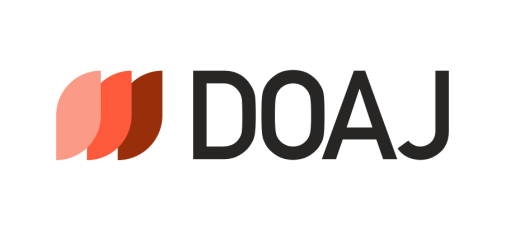Modul Latihan Self-assessment: Media bagi Siswa Sekolah Menengah Atas untuk Tahap Awal Perencanaan Karier
Abstract
Abstract: In general, the particular research and development aimed to produce modules for students and guidebook modules for counselor which is acceptable both theoretically and practically. The acceptability is assessed in the terms of format or design, as well as the material content and practice. The developmental procedures adapted from Borg and Gall model, namely: (1) stage I preliminary study and planning, (2) stage II product development, (3) stage III product trial, (4) stage IV product revision, and (5) final product. The product was a Self-Assessment Training Module as a Career Stage Planning of Students in Senior High School and its guidebook. The results of product trials showed that the developed product had a “very good” acceptability score. In conclusion, the product is accepted both theoretically and practically. The acceptability of the product give implications that the using of Self-Assessment Training Module can help the students to recognize, assess, and understand themselves, and then they can plan their careers appropriately. The module can help the school counselor to guide students in self-assessment as the initial stage of career planning.
Abstrak: Tujuan penelitian dan pengembangan ini secara umum adalah menghasilkan modul untuk siswa, dan panduan modul untuk konselor yang berterima secara teoretis dan praktis. Keberterimaan dilihat dari segi format atau desain bentuknya, serta dari segi isi materi dan latihannya. Prosedur pengembangannya mengadaptasi model Borg and Gall, yaitu: (1) tahap I studi pendahuluan dan perencanaan, (2) tahap II pengembangan produk, (3) tahap III uji coba produk, (4) tahap IV revisi produk, dan (5) produk akhir. Produk yang dihasilkan adalah Modul Latihan Self-Assessment sebagai Rangkaian Tahap Perencanaan Karier Siswa Sekolah Menengah Atas (SMA) dan panduannya. Hasil uji coba produk menunjukkan bahwa produk yang dikembangkan memiliki nilai keberterimaan “sangat baik”. Dengan demikian dapat disimpulkan bahwa produk dapat berterima secara teoretis dan praktis. Keberterimaan tersebut membawa implikasi pada penggunaan Modul Latihan Self-Assessment yang dapat membantu siswa untuk mengenali, menilai, dan memahami dirinya sehingga dapat merencanakan karier secara tepat. Adapun panduan modul dapat membantu konselor untuk membimbing siswa melakukan latihan self-assessment sebagai tahap awal perencanaan karier.
Keywords
Full Text:
PDFReferences
Armstrong, T. (1993). 7 Kinds of Smart: Identifying and Developing Your Many Intelligences. Plume.
Arsyad, A. (2011). Media Pembelajaran. Bandung: Rajawali Press.
Asyhar, R. (2012). Kreatif Mengembangkan Media Pembelajaran. Jakarta: Referensi Jakarta.
Baloglu, S., & McCleary, K. W. (1999). A Model of Destination Image Formation. Annals of Tourism Research, 26(4), 868–897. https://doi.org/10.1016/S0160-7383(99)00030-4
Borg, W. R., & Gall, M. D. (1983). Educational Research: An Introduction. New York: Longman Publishing.
Brown, D., & Brooks, L. (1991). Career Counseling Techniques. Allyn & Bacon.
Clawson, J. G., Kotter, J. P., Faux, V., & McArthur, C. C. (1995). Self-assessment and Career Development. Englewood Cliffs, NJ: Prentice-Hall.
Cooley, W. W. (1967). Interactions Among Interests, Abilities, and Career Plans. Journal of Applied Psychology, 51(5 Part 2), 1–16. https://doi.org/10.1037/h0025090
Duffy, C. (2005). The Moving Pictures and Sound Cluster. VINE, 35(1–2), 22–23. https://doi.org/10.1108/03055720510588425
Efendi, A. (2009). Beberapa Catatan tentang Buku Teks Pelajaran di Sekolah. Insania, 14(2), 320–333.
Egan, G. (2013). The Skilled Helper: A Problem-management and Opportunity-development Approach to Helping. Cengage Learning.
Flyer, F. A. (1997). The Influence of Higher Moments of Earnings Distributions on Career Decisions. Journal of Labor Economics, 15(4), 689–713. https://doi.org/10.1086/209842
Gardner, H. (2011). Frames of Mind: The Theory of Multiple Intelligences. Basic Books.
Gibson, R. L., & Mitchell, M. (2003). Introduction to Counseling and Guidance. Merrill/Prentice Hall.
Hanggara, G. (2016). Keefektifan “Proses Guru” sebagai Teknik Bimbingan Kelompok dalam Meningkatkan Pengambilan Keputusan Karier Siswa SMK. Jurnal Kajian Bimbingan dan Konseling, 1(4), 148–157. https://doi.org/10.17977/um001v1i42016p148
Hasebrook, J. (2016). Cognitive Design for Learning: Cognition and Emotion in the Design Process. In International Association for Development of the Information Society (IADIS) International Conference on Cognition and Exploratory Learning in the Digital Age (CE (hal. 203–209). ERIC.
Herawati, Y. (2010). Program Bimbingan dan Konseling untuk Mengembangkan Kematangan Karir Siswa (Studi Pengembangan Kematangan karir Siswa Kelas XI SMA Negeri 1 Singaparna Tahun Pelajaran 2009/2010). Jurnal Penelitian.
Holland, J. L. (1997). Making Vocational Choices: A Theory of Vocational Personalities and Work Environments. Psychological Assessment Resources.
Janah, R. R. (2015). Modul Perencanaan Karir untuk Meningkatkan Keterampilan Mengambil Keputusan Karir Siswa SMP pada Sekolah Lanjutan. (Unpublished bachelor’s thesis) Universitas Negeri Malang.
Jaya, S., Anwar, C., & Hermawan, H. (2017). Sistem Pemilihan Program Studi Berdasarkan Bakat, Minat dan Kecerdasan Calon Mahasiswa Berbasis Online. In Prosiding Seminar Nasional Sains dan Teknologi (SEMNASTEK).
Juan, Y. K., & Chao, T. W. (2015). Game-based Learning for Green Building Education. Sustainability (Switzerland), 7(5), 5592–5608. https://doi.org/10.3390/su7055592
Kumaidi, K., Farida, R., & Haq, A. H. B. (2017). Skala Minat Kejuruan: Strategi Mengenali Minat Vokasi Siswa. In Proceeding 6th University Research Colloquium 2017 (hal. 553–562).
Lau, P. L., Baranovich, D.-L., & Nor, M. M. (2012). Towards The Development of Career Exploration Program for Secondary School in Malaysia: Needs Assessment. International Journal of Research in Social Sciences, 2(1), 66–83.
Lin, R. L. (2014). A Study of The Innovative Design of Picture Book Creation Using Mixed Media. Applied Mechanics and Materials. https://doi.org/10.4028/www.scientific.net/AMM.496-500.2683
Mitchell, M. H., & Gibson, R. L. (2011). Bimbingan dan Konseling. Yogyakarta: Pustaka Pelajar.
Moorthy, K., Mansoori, M., Bello, F., Hance, J., Undre, S., Munz, Y., & Darzi, A. (2004). Evaluation of The Benefit of VR Simulation in A Multi-media Web-based Educational Tool. In Studies in Health Technology and Informatics (Vol. 98, hal. 247–252). https://doi.org/10.3233/978-1-60750-942-4-247
Mu, X., Walter, D., Berry, C., & Jiang, P. (2009). A Study of The Effect of Instructional Media in An Undergraduate Electrical Circuits Course. In Proceedings - Frontiers in Education Conference, FIE. https://doi.org/10.1109/FIE.2009.5350611
Nadiarenita, A. A., Muslihati, M., & Hotifah, Y. (2017). Pengembangan Paket Bimbingan Perencanaan Studi Lanjut Dengan Model Creative Problem Solving Bagi Siswa SMA. Jurnal Kajian Bimbingan dan Konseling, 2(1), 12–13. https://doi.org/10.17977/um001v2i12017p018
Palaiokrassas, G., Voulodimos, A., Konstanteli, K., Vretos, N., Osborne, D. S., Chatzi, E., … Varvarigou, T. (2016). Social Media Interaction and Analytics for Enhanced Educational Experiences. IEEE Multimedia, 23(1), 26–35. https://doi.org/10.1109/MMUL.2015.96
Philpot, T. A., Hubing, N., Flori, R. E., Hall, R. H., Oglesby, D. B., & Yellamraju, V. (2003). Computer-Based Instructional Media for Mechanics of Materials. International Journal of Engineering Education, 19(6), 862–873.
Raharjo, A. T. (2010). Hubungan Antara Multiple Intelligence Dengan Prestasi Belajar Siswa Kelas XI Di SMA Negeri 10 Malang. Jurnal Psikologi Tabularasa, 5(2), 311–322.
Rahma, U. (2010). Bimbingan Karier Siswa. Malang: UIN Maliki Press.
Rahmantyo, W. A. (2015). Orientasi Minat Kejuruan Pada Siswa SMA. (Unpublished bachelor’s thesis) Universitas Muhammadiyah Surakarta.
Setiawati, F. A. (2008). Pengembangan Alat Ukur Multiple Intelligence untuk Penelusuran Minat dan Bakat Siswa SMA. Jurnal Kependidikan: Penelitian Inovasi Pembelajaran, 38(1), 19–30. https://doi.org/10.21831/jk.v38i1.2269
Sharif, I., Wills, T. A., & Sargent, J. D. (2010). Effect of Visual Media Use on School Performance: A Prospective Study. Journal of Adolescent Health, 46(1), 52–61. https://doi.org/10.1016/j.jadohealth.2009.05.012
Sleeman, J., Lang, C., & Lemon, N. (2016). Social Media Challenges and Affordances for International Students: Bridges, Boundaries, and Hybrid Spaces. Journal of Studies in International Education, 20(5), 391–415.
Tiara, S. W. (2013). Pengembangan Modul Perencanaan Karir Model Career Exploration Program (CEP) bagi Siswa Sekolah Menengah Pertama. (Unpublished bachelor’s thesis) Universitas Negeri Malang.
Tiwasing, W., Sahachaisaeree, N., & Hapeshi, K. (2014). Design Goals and Attention Differentiations Among Target Groups: A Case of Toy Packaging Design Attracting Children and Parents’ Purchasing Decision. Design Principles and Practices, 7(1), 29–43.
Weddel, K. S. (2009). How To Choose A Good Esl Textbook For Adult Education And Family Literacy Learners. Northern Colorado Professional Development Center
Widyastuti, P. D., Mardiyana, M., & Saputro, D. R. S. (2017). An Instructional Media using Comics on the Systems of Linear Equation. In Journal of Physics: Conference Series (Vol. 895). https://doi.org/10.1088/1742-6596/895/1/012039
Refbacks
- There are currently no refbacks.
Copyright (c) 2018 Eni Rindi Antika, Andi Mappiare-AT, Ella Faridati Zen

This work is licensed under a Creative Commons Attribution-ShareAlike 4.0 International License.
Jurnal Kajian Bimbingan dan Konseling
ISSN 2503-3417 (online), ISSN 2548-4311 (print)
Email: jkbk.fip@um.ac.id
Find Jurnal Kajian Bimbingan dan Konseling on:
 This work is licensed under a Creative Commons Attribution-ShareAlike 4.0 International License |  |
View Visitor Stats







